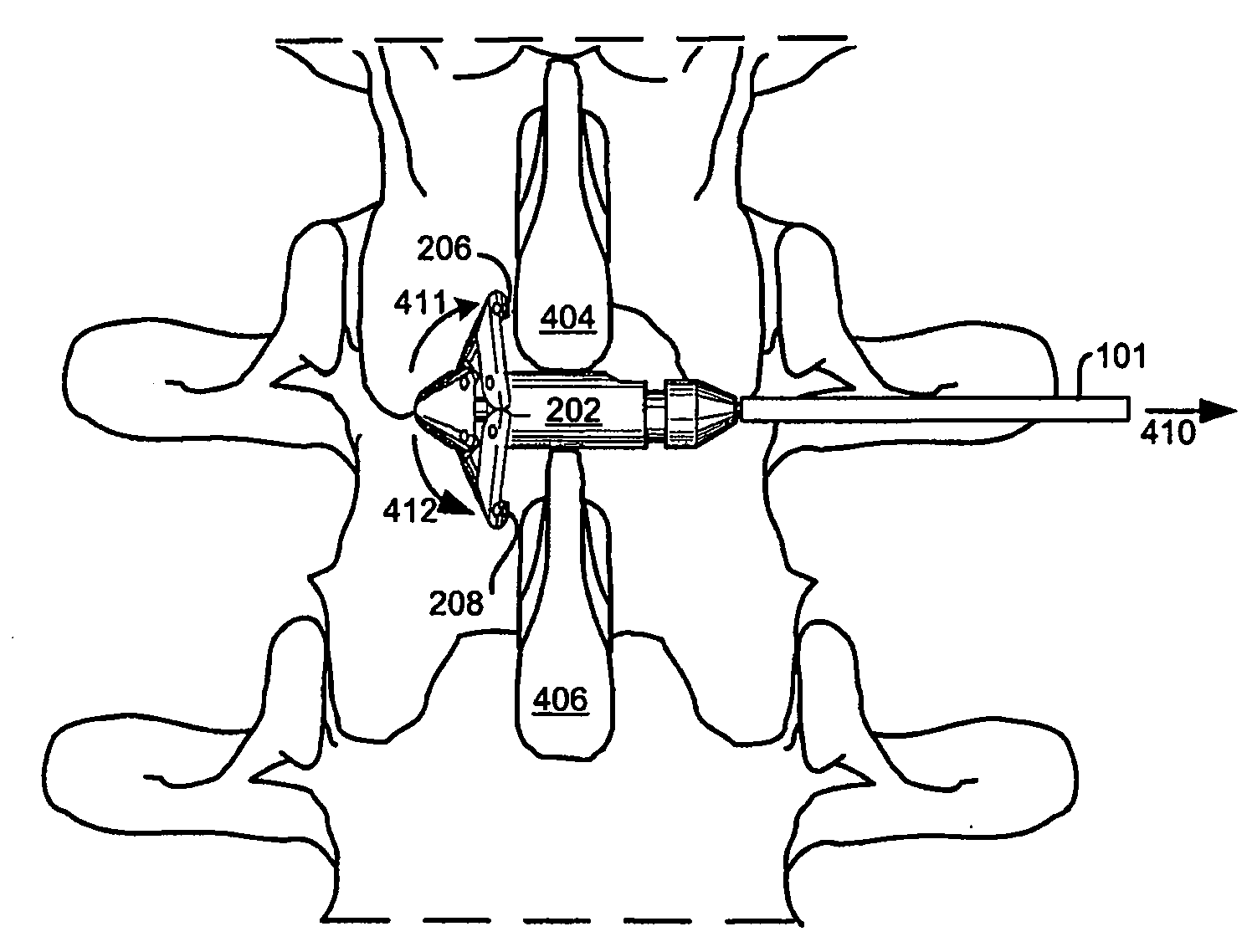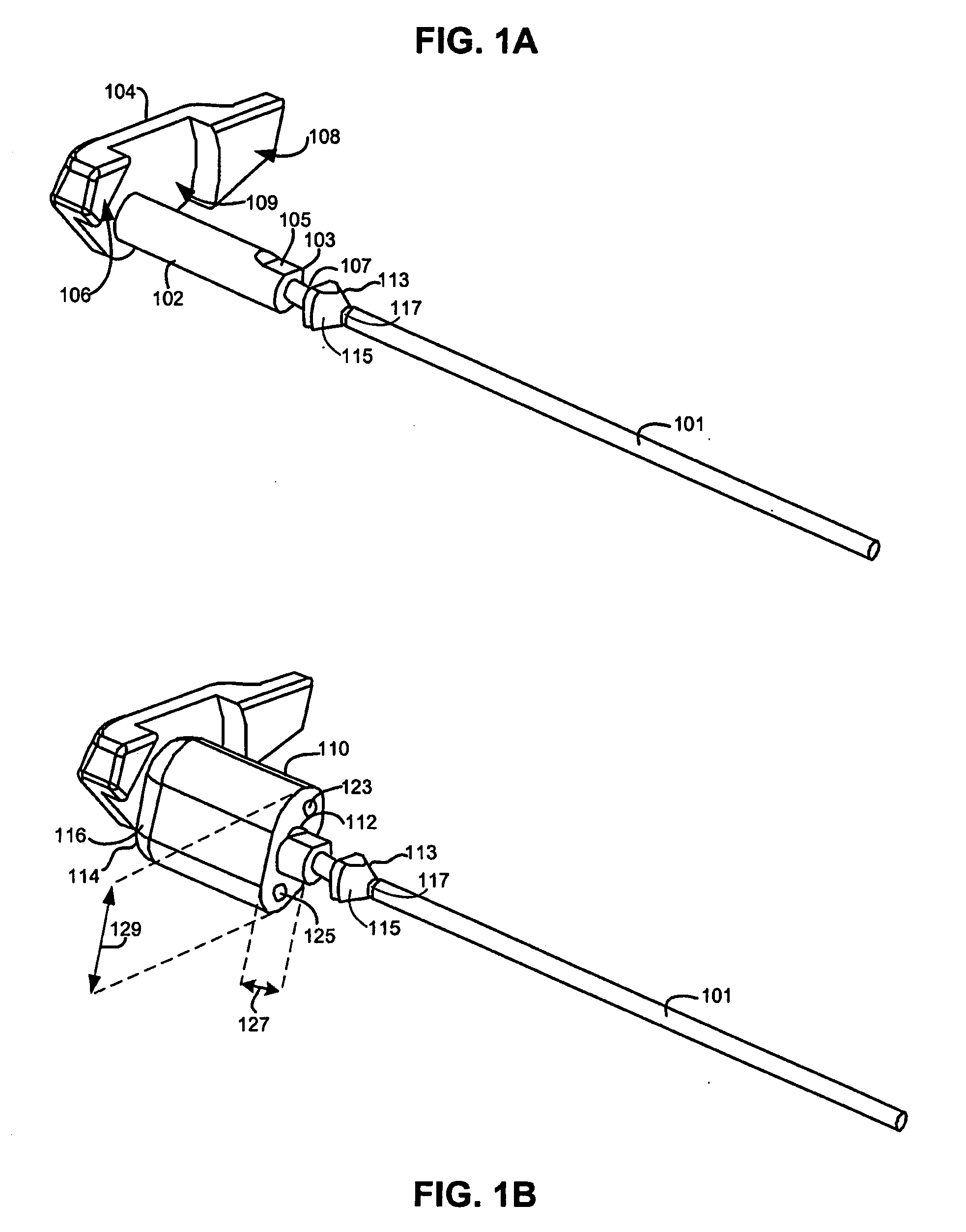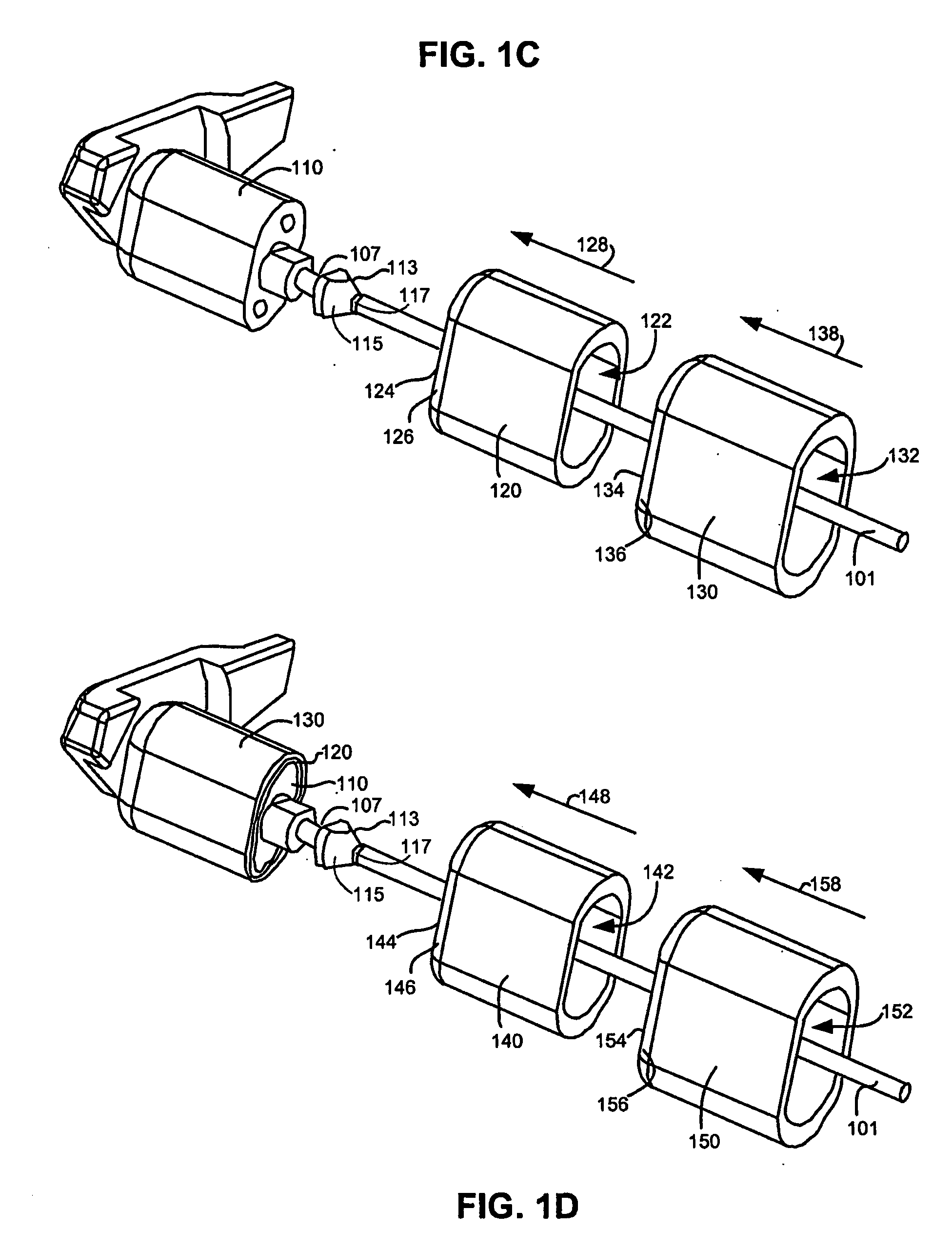Systems and Methods for In Situ Assembly of an Interspinous Process Distraction Implant
a technology of in situ assembly and dislocation, which is applied in the field of systems and methods for in situ assembly of an interspinous process dislocation implant, can solve the problems of inability to fully realize the function of the spinal column,
- Summary
- Abstract
- Description
- Claims
- Application Information
AI Technical Summary
Problems solved by technology
Method used
Image
Examples
Embodiment Construction
[0037]In view of the foregoing background of the invention, it is an object of this invention to provide a spinal implant which may be assembled in situ inside the patient.
[0038]It is also an object of this invention to provide a spinal implant system wherein the size of the implant may be adjusted during the procedure depending on patient anatomy without removal of the implant.
[0039]It is still further an object of this invention to provide a minimally-invasive surgery procedure for installing an implant which may be assembled in situ inside a patient.
[0040]In accordance with the objects and background of the invention, in one embodiment, the present invention provides an implant system for implantation between adjacent spinous processes for the relief of pain associated with the spine. The implant has a series of spacers which may be inserted over a shaft located between adjacent spinous processes thus allowing the implant to be assembled in situ. The spacers limit extension motio...
PUM
 Login to View More
Login to View More Abstract
Description
Claims
Application Information
 Login to View More
Login to View More - R&D
- Intellectual Property
- Life Sciences
- Materials
- Tech Scout
- Unparalleled Data Quality
- Higher Quality Content
- 60% Fewer Hallucinations
Browse by: Latest US Patents, China's latest patents, Technical Efficacy Thesaurus, Application Domain, Technology Topic, Popular Technical Reports.
© 2025 PatSnap. All rights reserved.Legal|Privacy policy|Modern Slavery Act Transparency Statement|Sitemap|About US| Contact US: help@patsnap.com



